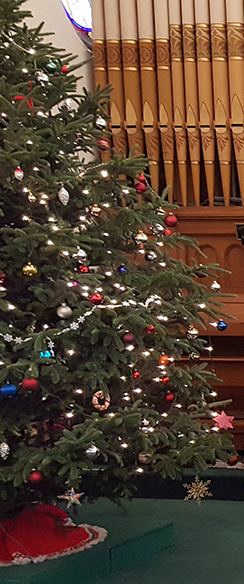 Now is the time of year when our local villages work through their annual budget process. Actually, this is the time of year when our local villages are almost done with their annual budget process. If this timing sounds strange to you, it’s because the fiscal year of a village is not the same as a calendar year. In the case of the villages in our coverage area (Honeoye Falls, Lima, Scottsville, and Avon), the fiscal year begins on June 1st of each year. As a service to our dedicated readers, we’re providing something akin to an “FAQ” on the village budgeting process. (“FAQ” stands for “frequently asked question” and is something most websites feature so folks have a quick and easy way to find the answers of, well, frequently asked questions.”)
Now is the time of year when our local villages work through their annual budget process. Actually, this is the time of year when our local villages are almost done with their annual budget process. If this timing sounds strange to you, it’s because the fiscal year of a village is not the same as a calendar year. In the case of the villages in our coverage area (Honeoye Falls, Lima, Scottsville, and Avon), the fiscal year begins on June 1st of each year. As a service to our dedicated readers, we’re providing something akin to an “FAQ” on the village budgeting process. (“FAQ” stands for “frequently asked question” and is something most websites feature so folks have a quick and easy way to find the answers of, well, frequently asked questions.”)
New York State does its best to make things muddled and confusing when it comes to municipal budgets (such as discouraging reliance on “rainy day” accounts – something almost every private business or individual with any sense strives to create – financial planners call them “emergency funds”). Still, the budget process is surprisingly mechanical. Carl Luft, Mayor of Lima, describes his village’s process this way, “Our calendar year runs from June 1st to May 31st. Beginning in February, the Board starts having meetings with our accountants to establish a proposed budget for the upcoming year. A tentative budget would be proposed by the Board no later than March 31st. A public hearing would then be scheduled no later than April 15th, where the public could make comments and suggestions to the budget. The Board could then make changes to the budget and make a resolution to adopt the budget in a meeting no later than May 1st. Then, adoption by the Board of a resolution providing for the levy of taxes and for the addition to the tax roll of any unpaid charges must take place not later than May15th. After that, the mayor and clerk must execute tax warrant not later than May 20th.”
Paul Gee, Mayor of Scottsville, told The Sentinel their process runs in a very similar fashion. He says, “In January, the Village Treasurer performs a mid-year review of our current budget. With this information and reviews of expired budgets, the Treasurer puts together a tentative budget for Board review. In February, the Board meets every Saturday with department heads and makes changes to the budget accordingly. By March, we have our next to final draft. The Mayor and Treasurer along with guidance from our accounting firm then review the draft and make any necessary changes. The final tentative budget is then presented to the public for review and comment at our budget hearing. If in agreement, the Board will pass the budget at the hearing.”
It’s quite understandable that all our local villages follow a similar timeline of activity. Lima Town Clerk Linda Banfield explained the state has specific rules and guidelines for Villages (and all other municipalities) regarding the budget process. Gee provided The Sentinel with the Comptrollers’ guidelines for the village budgeting process. (shown to the right)
While these guidelines are useful, the State finds a way to put up its share of impediments. Rick Milne, Mayor of Honeoye Falls, whose village maintains the same general budgetary timeline as Lima and Scottsville, informs us that “each municipality (village, town, city or county) are all unique and have their own issues yet at the same time very common themes. [There is] very little overall state support. AIM Funding that has been flat since 2008/09 and has even dropped in real dollars over that time period. CHIP’s funding for sidewalk and road repairs is also flat and doesn’t begin to meet needs. We all hear about unfunded mandates, but it continues to be a big issue for all municipalities.”
More problematic are new rules from the State regarding “tax caps” and “tax freezes.” While it may seem that these rules are written in stone, New York State realizes legitimate circumstances do exist that require these rules to be suspended. The State permits villages to get around tax caps, for example, but only if the village has previously passed a resolution well in advance of the actual need. As a result, all villages generally pass these resolutions, even if they end up not utilizing them.
Finally, there is the issue of “unappropriated” funds, the technical name of those “rainy day” funds which were referenced earlier. Unappropriated funds should not be confused with reserve funds. Once money goes into a reserve fund, it can only be used for what the reserve fund is designated for. Unappropriated funds can be used for anything. They play an important role in maintaining a village’s cash flow over the course of the year. Villages are required to maintain a balance between expenditures and tax revenues. If there is a surplus at the end of the year, the extra money can go into either a dedicated reserve fund or an unappropriated fund. If there is a deficit at the end of the year, the village can use money in the unappropriated fund to fund that deficit (it cannot use any reserve funds for this purpose). In order to keep tax rates stable (or lessen the size of a necessary tax increase), the village can include the use of money from previous years’ unappropriated funds to offset what would otherwise appear to be a deficit. That’s what Rick Milne says the Village of Honeoye Falls is doing this year.






